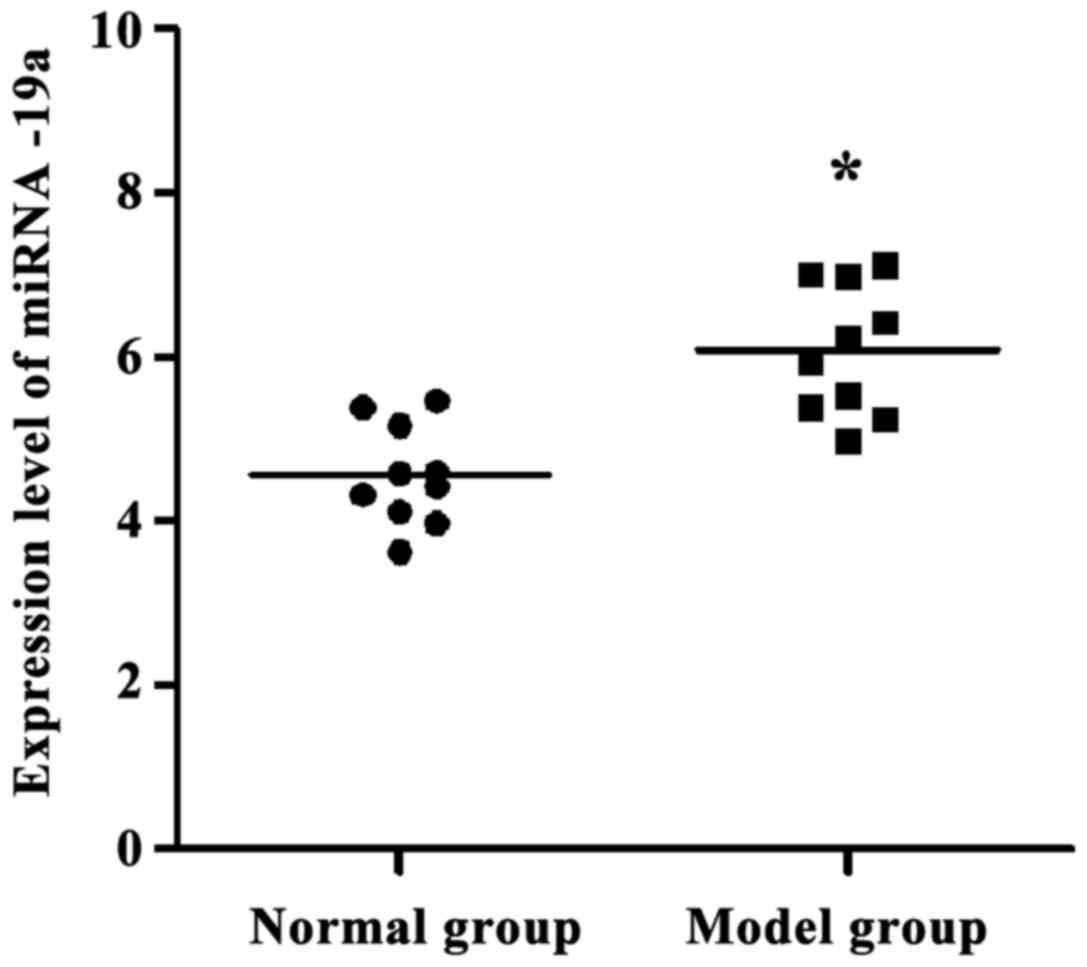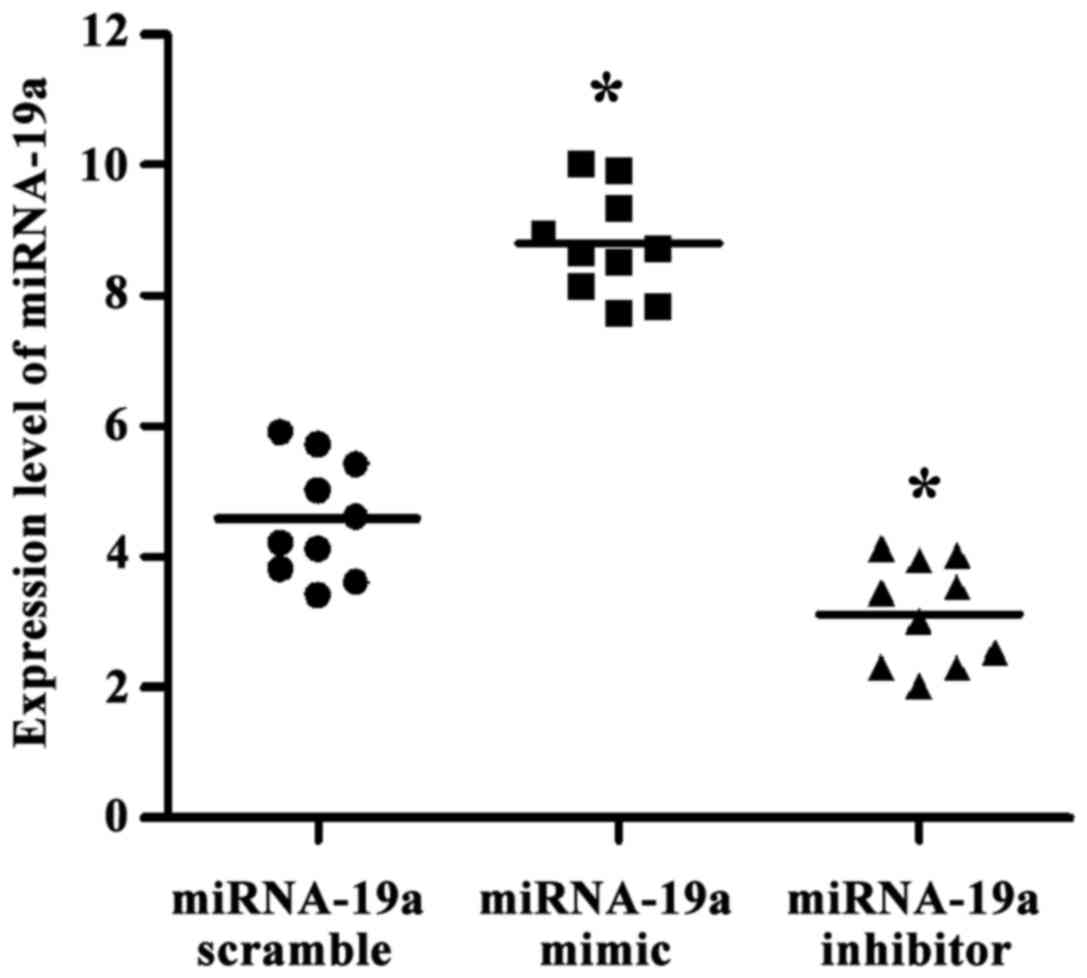Effect of miRNA-19a on gastrointestinal motility in rats with functional dyspepsia
- Authors:
- Published online on: March 30, 2018 https://doi.org/10.3892/etm.2018.6009
- Pages: 4875-4879
-
Copyright: © Deng et al. This is an open access article distributed under the terms of Creative Commons Attribution License.
Metrics:
Total
Views: 0 (Spandidos Publications: | PMC Statistics:
)
Total PDF Downloads: 0 (Spandidos Publications: | PMC Statistics:
)
Abstract
The effect of microRNA (miRNA)-19a on gastrointestinal motility in rats with functional dyspepsia was investigated. Fifty adult Sprague-Dawley (SD) rats were randomly divided into 5 groups, 10 rats in each group, one group as the normal group, one group as the model group, and the other three groups were divided into negative control group, miRNA-19a mimic group and miRNA-19a inhibitor group. All rats were intraperitoneally injected with miRNA‑19a scramble, miRNA-19a mimic and miRNA-19a inhibitor. Except the normal group, the functional dyspepsia model rat was established by proper clipping tail stimulation. The gastric emptying rate, intestinal propulsive ratio, serum motilin and vasoactive intestinal peptide of rats in each group were measured. The level of miRNA-19a expression in each group was detected by reverse transcription-polymerase chain reaction (RT-PCR). The gastric emptying rate, intestinal propulsive ratio and serum motilin in model group were significantly lower than those in normal group, and vasoactive intestinal peptide was higher in model group than that in normal group (P<0.05). The expression of miRNA-19a in model group was significantly higher than that in normal group (P<0.05). After intraperitoneal injection of miRNA-19a mimic, the expression of miRNA-19a was increased; gastric emptying rate, intestinal propulsive ratio and serum motilin were significantly reduced in model group, and vasoactive intestinal peptide was increased (P<0.05). After intraperitoneal injection of miRNA-19a inhibitor, the expression of miRNA-19a was remarkably decreased; gastric emptying rate, intestinal propulsive ratio and serum motilin were further increased in model group, and vasoactive intestinal peptide was decreased (P<0.05). In conclusion, the expression of miRNA-19a in rats with functional dyspepsia is higher than that in normal rats, and the reduced miRNA-19a expression can ameliorate the gastrointestinal motility in rats with functional dyspepsia.












